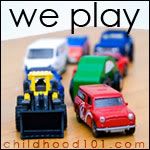Feed Me Books Friday: Activities for Observing the Seasons
Thursday, March 24, 2011
Even When Spring is Being Stubborn
I’ve lived in the same city for 25 years, and we’ve never had clearly defined seasons. Much as I’d like to think a date on the calendar means it’s time to bring out the spring wardrobe, I know better. Doesn’t mean I’m not disappointed that the first week of spring has been gloomy, rainy, and colder than the several weeks prior that were supposedly winter! So how do I explain to B that spring is more than just a flower on the calendar square?
Look Around!
- Join your scientific observation with scientific expression by drawing or painting the object of your attention several times a year.
- Develop language and vocabulary skills by drafting a list of descriptive terms for the object, then comparing and contrasting the descriptors that apply during different seasons. (The tree may always be tall, but it is only sometimes full or fragrant.)
- Photograph the object you are observing each month on the same date, and create a time-line of seasonal changes. Older children (and more organized parents) might even photograph once a week to observe more minute changes. A collection of such photographs would make an attractive calendar display or computer screensaver.
- Ask an imaginative child to consider how the object feels about the season and weather changes. Use as a writing prompt for older children or take dictation.
Just Ask!

If you’re not sure where to start with your hunt for spring, pick up a copy of Where Is Spring?
Appropriate for: toddlers, preschoolers, primary grades.
What signs have you seen of changing seasons? Are you recording them in some way?

Look Around

























6 comments:
Oh, that sounds like a LOVELY book...
I love the idea of photographing an object during each season.
Our pussy willow is what we watch for signs that spring is near.
Pretty good post. I just stumbled upon your blog and wanted to say that I have really enjoyed reading your blog posts
I am glad to be one of the visitors on this great internet site (:, appreciate it for posting .
I love this post about Spring. We are finally back to warmer temps here and love watching things coming up. We also listened to fun books about Spring at our library story time. Yea Spring!
Post a Comment